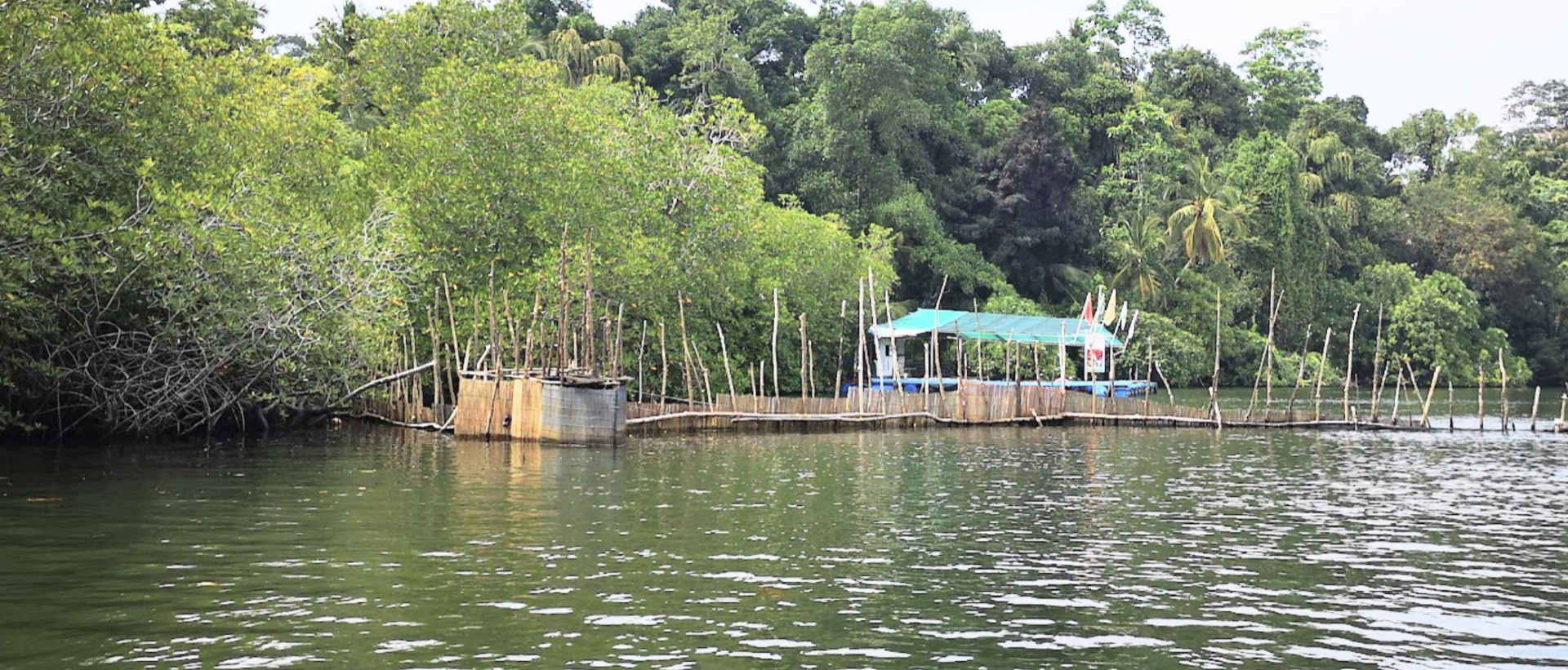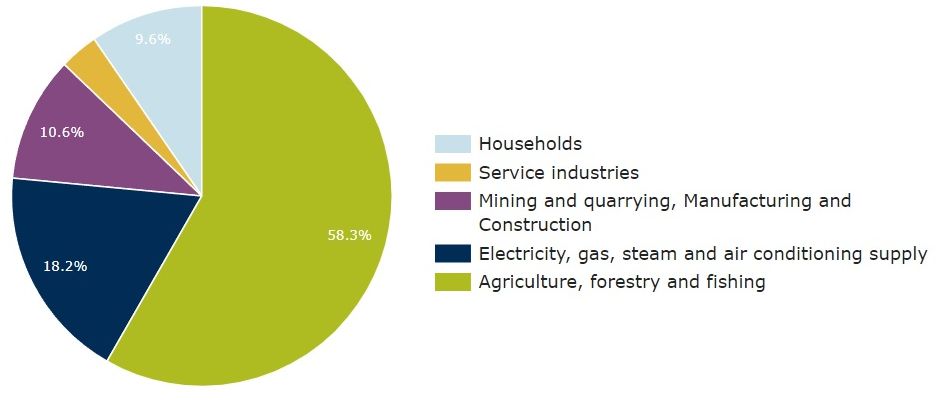
MOOC: Auditing Water Issues
Use of water
We need and use water daily for various purposes, for example, to maintain hydration (according to various studies, the human body needs around 2 litres of water daily to avoid dehydration), to cook and for sanitation purposes. Not only do we need water for our personal use, we need water for agriculture and food production, which means that our economy is also dependent on water. Water is also used abundantly in industries for cooling and in mines for transporting ore.

Figure 4. Annual water use by sector in Europe in 2017 [Ref 4]
Water is generally abundant in Europe, but freshwater resources per capita have decreased. Between 1960 and 2010 freshwater resources have decreased by 24%, particularly in southern Europe. [] The densely populated river basins are hotspots for water stress in Europe. According to the EEA, about 30% of the total of European population lived under water stress conditions in the summer of 2015.
The consumption of drinking water in the European Union (EU) is very high. According to the European Environment Agency (EEA), household water consumption per capita is around 150 litres per person per day in Europe. The high increase in consumption relates to the fact that household water must meet the requirements for drinking water.
The main sector using renewable water resources is agriculture. In 2017, this sector used approximately 59% of the total water used in Europe, mainly for crop irrigation. []
Water is also widely used in Europe for producing electricity in hydropower or thermal power plants. Rivers and lakes provide natural transportation routes, e.g. the River Danube is a waterway between northern and southern Europe.
Another activity which significantly disturbs the natural circumstances of water is mining, which usually requires the lowering of the water table (i.e. the level of groundwater). For example, large quantities of water are used in several mining processes for transporting ore. Water (also) plays a significant role in many industrial processes, where it is often used for cooling.
Finally, water has a central role in recreation. Water bodies enrich the landscape and scenery and inspire us to engage in sports or photography.
Freshwater is not always ready for consumption without purification for different reasons. Water may contain undesirable chemicals, plastics, biological contaminants, suspended solids and gases, which must be removed. Water purification and its distribution through pipelines requires investment and incurs daily maintenance costs. Therefore, there is a cost for tap water. In dry areas, several countries are dependent on desalination plants, where freshwater is produced from marine water. According to the International Desalination Association, more than 300 million people around the world are dependent on desalinated water to meet their daily needs. []
 THINKING EXERCISE
THINKING EXERCISE
- Which sectors are the biggest water consumers in your country?
- What is celebrated on 22 March?
Availability of drinking water is considered a human right.
On 28 July 2010, the United Nations (UN) Resolution 64/292 explicitly recognized the human right to water and sanitation and acknowledged that clean drinking water and sanitation are essential to the realisation of all human rights. [] The resolution calls upon UN member states and international organisations to provide financial resources, capacity building and technology transfer to help countries, in particular developing countries, to provide safe, clean, accessible and affordable drinking water and sanitation to all. UN General Assembly stated:
‘The human right to water is indispensable for leading a life in human dignity. It is a prerequisite for the realization of other human rights.’ []
The right to water is defined by the UN as the right of everyone to sufficient, safe, acceptable, physically accessible and affordable water for personal and domestic use. []


